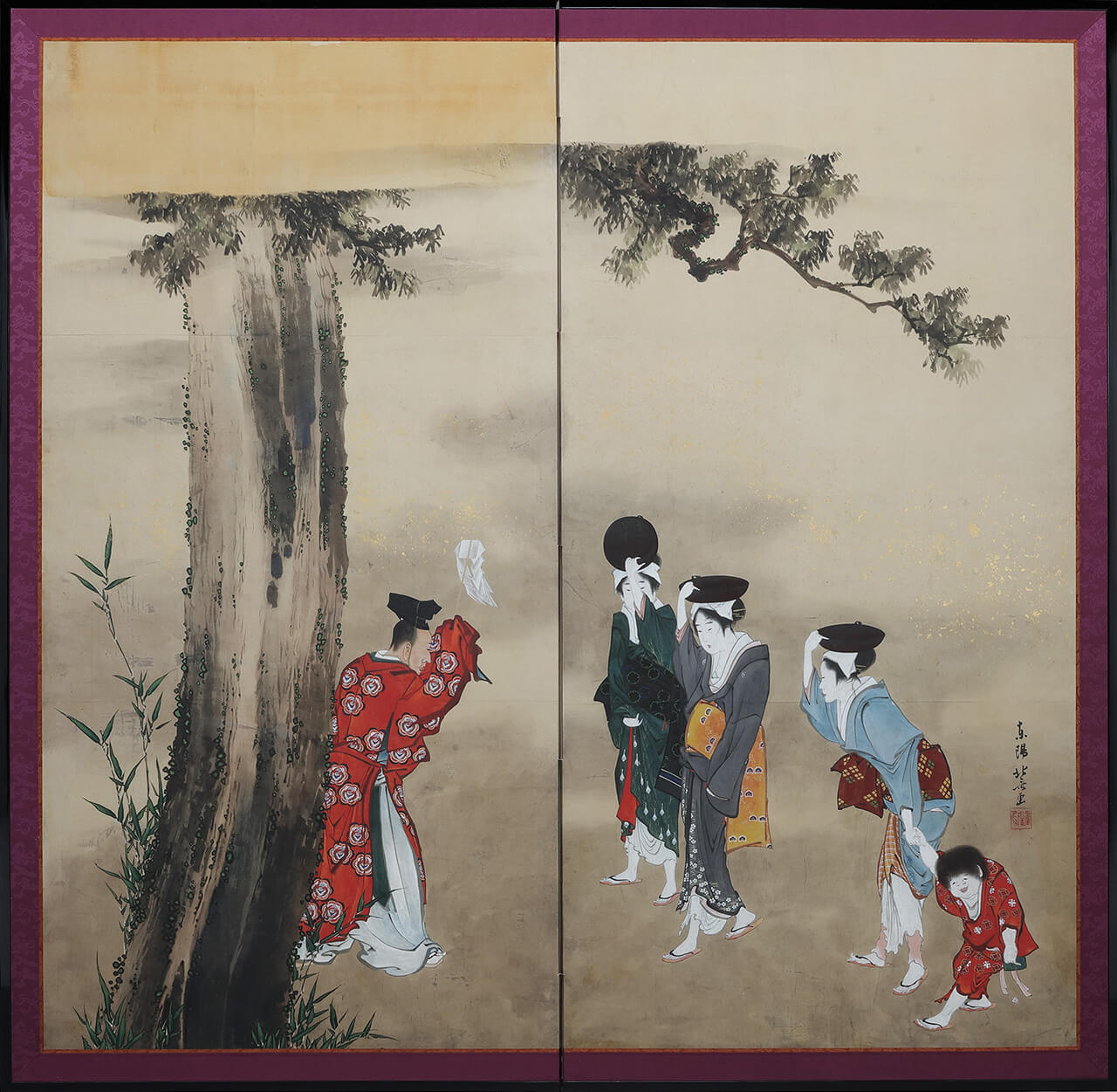A Shinto Priest, Three Women and a Child
Facsimiles of works in the collection of the Freer Gallery of Art, Smithsonian Institution, Washington, D.C. : Gift of Charles Lang Freer, F1904.177.
These images are based on the high resolution facsimile produced by the Tsuzuri Project. Unauthorized copying, duplication, or transfer of these images is strictly prohibited.
DATA
- Artist:
- Katsushika Hokusai
- Historical era:
- Edo (19th century)
- Material:
- printed, sprinkled gold on washi paper
- Medium:
- two-fold screens
- Theme:
- High Resolution Facsimile of Japanese Art Abroad
- Size:
- H162.3 × W166.0 cm
- Recipient:
- Sumida Ward
- depository:
- The Sumida Hokusai MuseumMAP
[Original]
- Current owner:
- The Freer Gallery of Art of the Smithsonian Institution
- Material:
- ink, color, and sprinkled gold on paper
DESCRIPTION
This is one of 20 original paintings bought in 1904, by Charles Lang Freer, together with Six Tama Rivers and others, from Honma Kozo of the Honma family, who were wealthy merchants from Sakata, Yamagata Prefecture via the Japanese fine art dealer Kobayashi Bunshichi. Three women, including a mother with a child, are undergoing ritual purification by a Shinto priest wearing a red kariginu (informal clothes worn by the nobility from the Heian period onwards) on the left-hand side of the picture. The A Shinto Priest, Three Women and a Child is performed on May 3 each year at the Chikuma-jinja Shrine, Maibara-shi, Shiga Prefecture. It is said that women would follow behind a mikoshi portable shrine while wearing as many cooking pots as the number of their former lovers. From its depiction in the Tales of Ise and other sources, the event seems to have been widely known in the capital Kyoto by the Heian period, and it is counted as one of Japan's three strangest festivals. For the signature and seal of this work, Hokusai indicated “Toyo.” The painting is therefore presumed to have been commissioned by someone from Omi Province (today's Shiga Prefecture).

